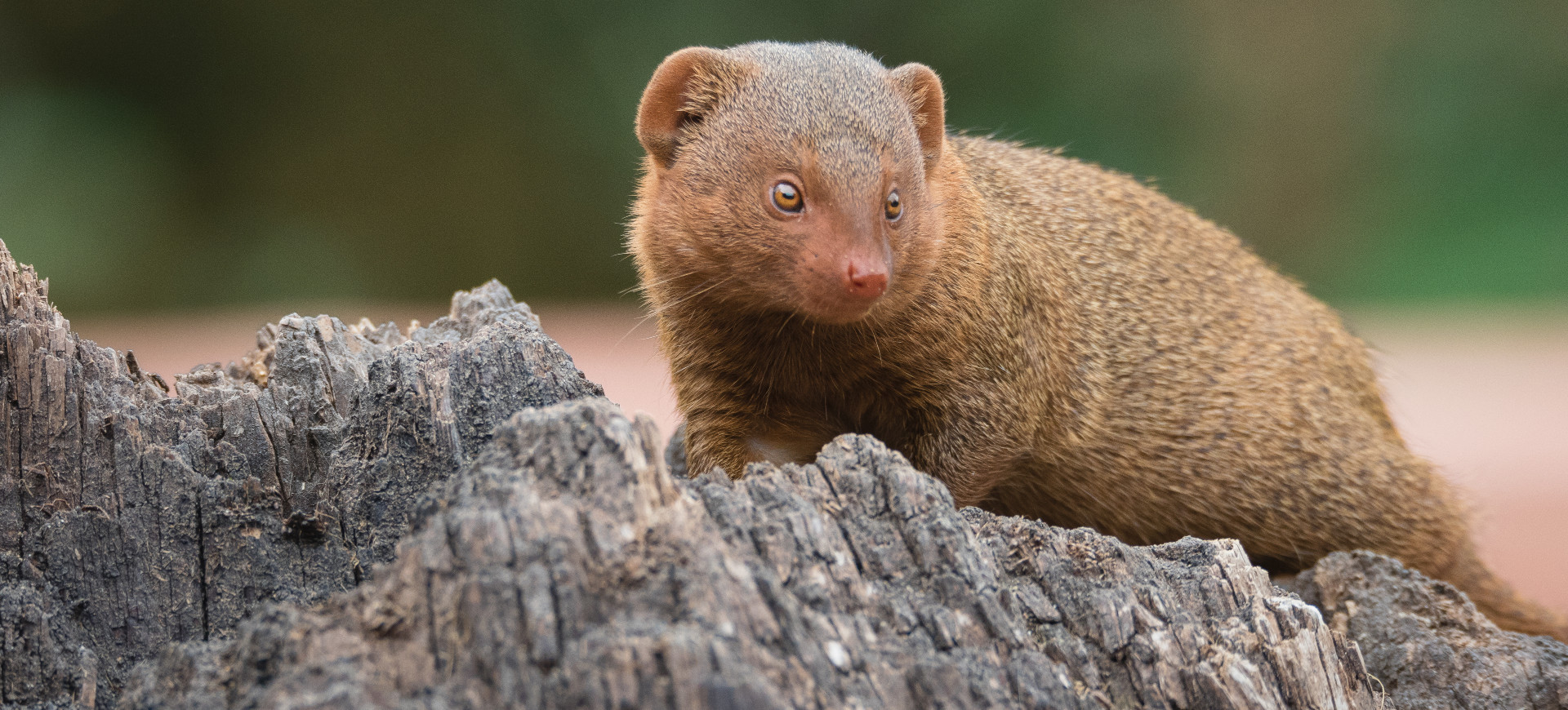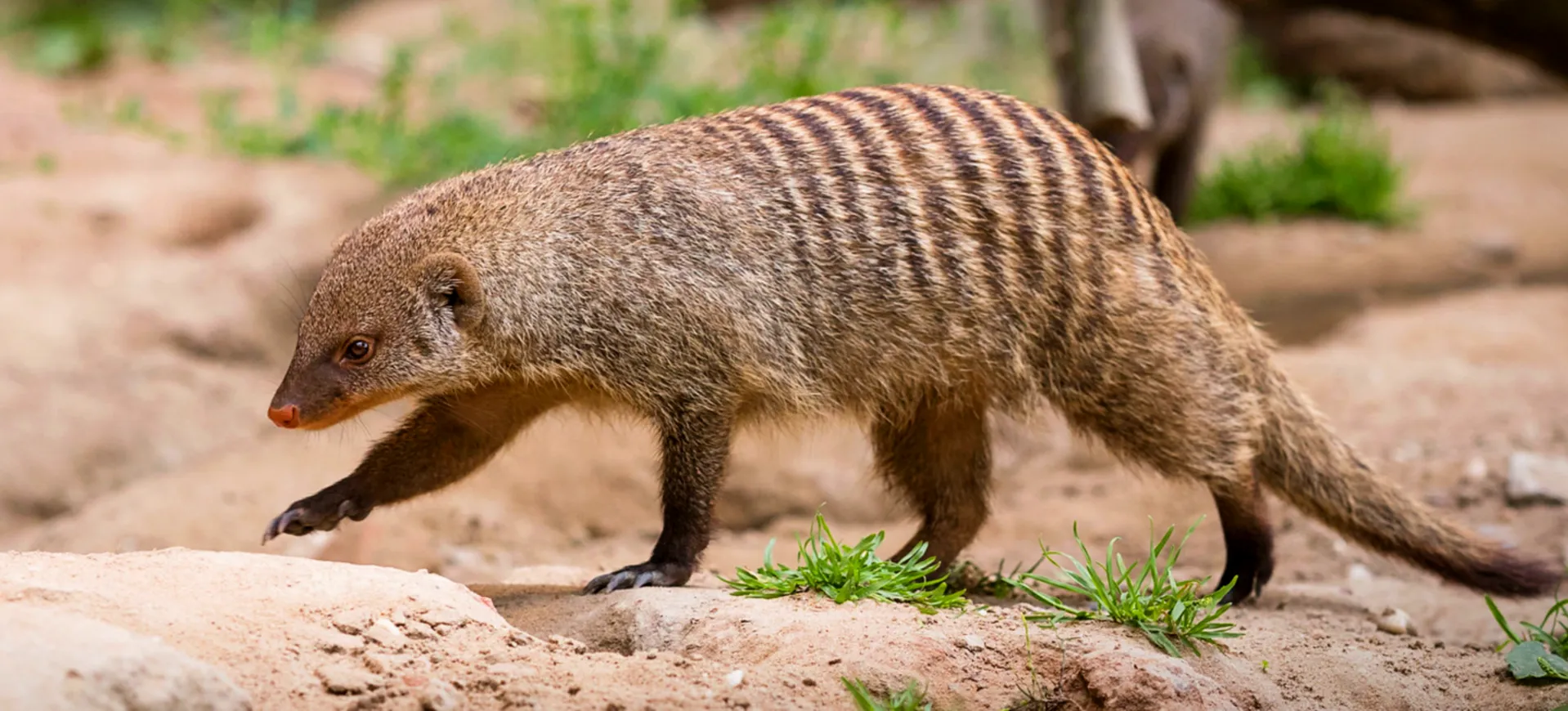Overview
The Meerkat, also known as the Suricate, is a small, burrow-dwelling mammal native to the arid regions of Southern Africa. They are known for their upright stance, agility, and social nature. Highly adapted to their desert habitats, these carnivorous creatures are part of the mongoose family. They live in large, complex underground burrows in groups known as clans or mobs, with highly hierarchical structures.
Meerkats are renowned for their endearing social behavior, intricate communication systems, and communal parenting practices. They are highly vigilant creatures and work together to protect the group from predators. Meerkats also demonstrate altruistic behavior within their communities, taking turns to be on the lookout for danger while others forage or rest.
The Meerkat’s diet primarily consists of insects, spiders, and other small animals, but they are also known to eat plants and fruits occasionally. They have a characteristic foraging behavior of digging in the ground with their sharp claws. At the same time, their slender, tapering body and the dark patches around their eyes protect them from sun glare and allow them to focus on their prey.
Taxonomy
Kingdom
Phylum
Class
Order
Family
Genus
Species
Type
Physical Description:
Meerkats are small, slender mammals with broad, flat heads, large eyes, and pointy snouts. They have a light gray to tan coat with stripes running across their backs and tails, and the stomach is often unmarked. They have short, muscular limbs equipped with long, non-retractile claws designed for digging. A distinct feature is the dark patches around their eyes, which help reduce glare and enhance their focus.
Adult meerkats usually measure about 25-35 cm in body length, with an additional 17-25 cm for the tail. They typically weigh between 0.6 and 1 kg. Sexual dimorphism is not pronounced, although males are slightly larger than females. Their tails, tapering and ending with a dark tip, help them maintain balance when standing upright. Meerkats do not have fat stores, so they need to forage for food every day.

Lifespan: Wild: ~10 Years || Captivity: ~15 Years

Weight: Male: 1.6-2.2 lbs (0.72-1 kg) || Female: 1.4-2 lbs (0.63-0.9 kg)

Length: Male: 13.7-17.7 inches (35-45 cm) || Female: 12.9-16.9 inches (33-43 cm)

Height: Male & Female: 9.8-11.8 inches (25-30 cm) standing

Top Speed: 20 mph (32 km/h)
Characteristic:
Native Habitat:
Meerkats are native to the arid regions of southern Africa and are specifically adapted to living in the harsh conditions of the Kalahari and Namib deserts. Sandy, arid, open terrains with little rainfall and extreme temperature fluctuations characterize these environments.
The caves they live in provide shelter from the hot sun during the day and warmth during the cold nights. These caves have multiple entrances, tunnels, and rooms and are typically shared by generations of meerkats. Different rooms serve different purposes, such as nurseries, rest chambers, and even toilets.
Biomes:
Biogeographical Realms:
Continents:
Countries:
Diet:
Diet & Feeding Habits:
Meerkats are omnivores with a diet primarily composed of invertebrates. They prefer beetles, caterpillars, spiders, and scorpions but will consume small vertebrates like rodents, birds, eggs, and even snakes when available. These creatures have immunity to certain venoms, allowing them to feed on some species of venomous snakes and scorpions without being harmed.
Foraging for food takes up most of a meerkat’s day. They use their keen sense of smell and sharp claws to dig up their prey from beneath the ground. Despite living in a desert environment, meerkats get most of their water intake from their food. Occasionally, they may consume tubers, roots, or fruits, showcasing their adaptability to dietary changes based on seasonal availability.
Mating Description:
In a meerkat group, typically, only the alpha male and female breed, while the rest of the group helps take care of the offspring. Meerkat mating rituals involve grooming and following each other, with the actual mating typically happening underground.
Breeding occurs throughout the year, although it can be more prevalent during the warmer seasons when food is abundant. The gestation period lasts approximately 11 weeks, after which the female gives birth to 2-5 pups. The pups are born altricial – blind, hairless, and helpless. Only after about two weeks do they open their eyes, and around a month old, they venture out of the burrow for the first time.
Reproduction Season:
Birth Type:
Pregnancy Duration:
Female Name:
Male Name:
Baby Name:
Social Structure Description:
Meerkats are highly social creatures and live in large groups called clans or mobs, ranging from 20 to 50 individuals. These groups are composed of multiple families but are usually dominated by one pair, the alpha male and female.
Each meerkat has a specific role within the clan, including foraging, babysitting, teaching young ones, or acting as a sentinel. The sentinel’s role is crucial – they stand guard and alert others to approaching dangers. This hierarchy and division of responsibilities contribute to the survival and thriving of meerkats in their harsh habitats.
Groups:
Conservation Status:
Population Trend:
While precise population numbers for meerkats are not available, they are generally considered widespread and numerous within their native range in southern Africa. The population trend is currently stable, and meerkats are listed as “Least Concern” by the IUCN.
Large populations can be found in national parks and reserves, such as the Kalahari Gemsbok National Park. Here, conditions are ideal for them as they are protected from human interference and habitat destruction. However, in some parts of their range, meerkats face threats from predation and competition with other carnivores.
Population Threats:
While meerkats have few natural threats, they are sometimes preyed upon by larger carnivores, such as jackals, and birds of prey, such as eagles. Competition with other carnivores for food resources also poses a significant threat, especially in a drought when food is scarce.
Meerkats are also susceptible to diseases like tuberculosis and the distemper virus. In certain regions, habitat loss due to human encroachment and climate change poses an additional threat. However, these threats are insignificant enough to cause a decline in the overall meerkat population.
Conservation Efforts:
The conservation status of meerkats is “Least Concern,” and currently, no specific conservation efforts are aimed toward their preservation. This is mainly due to their widespread distribution and stable population trend.
However, meerkats indirectly benefit from broader conservation programs aimed at preserving their habitats. Their population in protected areas, such as national parks and wildlife reserves, is well maintained, offering them a safe environment free from human encroachment.
Additional Resources:
Fun Facts
- Meerkats have immunity to some types of venom, allowing them to eat venomous snakes and scorpions.
- They can close their ears to prevent sand from entering while digging.
- Meerkats take turns babysitting the young ones in the group, demonstrating altruistic behavior.
- They have a complex language of growls, barks, and whistles to communicate various messages.
- The dark patches around their eyes reduce glare and enable them to see far into the distance.
- A meerkat can dig through a quantity of sand equal to their body weight in seconds.
- Meerkats bask in the sun in the morning to warm up after a cold desert night.
- A sentinel meerkat will often stand on its hind legs using its tail for balance to get a better view of the surroundings.
- Despite their small size, meerkats are excellent hunters and can catch prey like lizards, birds, and rodents.
- Meerkats have a gestation period of 11 weeks, after which 2-5 pups are typically born.









